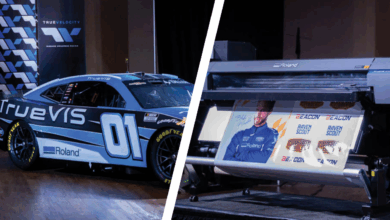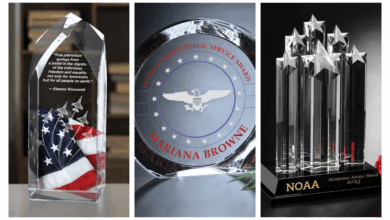NY Minuteman Press Employee Todd Brown Hits 50 Years in Printing
Todd Brown’s printing career includes over 40 years of dedicated service to Minuteman Press in Syosset

In 1971, Todd Brown began his career in printing through his high school program that gave him paid work at the school district print shop. Fifty years later, Brown shares his story of longevity in the industry, which includes over 40 years as an employee of Minuteman Press in Syosset, New York. The Syosset franchise is one of the original 10 Minuteman Press locations.
He recalls, “I started with Minuteman Press in September 1977. It was an entirely different business back then, and I was hired by Mike Jutt (executive VP and director of training) as a press operator for the Syosset location. We had the original husband and wife owners and myself. I did whatever needed to be done, and I already had six years of experience doing the kind of printing that we did during those early years.”
Speaking on his printing background before Minuteman Press, he says his high school print shop is where he learned about paper and ink. Following graduation, he worked for several print shops, and after a layoff, he found himself at Minuteman Press in Syosset.
Todd’s initial run with Minuteman Press lasted eight years. He explains, “I left for three or four years to learn more and take other positions. The owners reached out to me to come back, and I agreed it was the best fit. I was now married, I had a house, and I agreed to come back to run the back of the shop and become shop manager.”
“I simply know to print, and I love what I do. I always took the attitude of treating the shop and customers like it was my own. You can’t work in this business and say, ‘That’s not my job.’ It’ll get you and the business nowhere,” Brown says.
Owner Mitch Parker has been running the business since February 2008, and Brown works with graphic designer Denise to make sure jobs are fit to print. Brown is responsible for printing jobs that require digital machines.
Evolution of printing
He reflects on how the printing industry has changed over the years and how he has been able to keep up with the changes. “The entire industry has evolved. Digital printing is constantly changing, as is technology.”
He credits his ability to adapt to new technology to his willingness to learn. He made it a point to learn graphic design and often used his skills in Adobe PageMaker, Photoshop, and Print Shop deluxe for passion projects and learning more about design for printing.
Brown adds, “As the business changed, I was able to pretty seamlessly move into that side of the business. When I created flyers for my band, I knew what I needed to do in terms of matching the design to the plates.”
“The main thing about the printing side of this business that most people don’t realize is that it’s still about paper. Paper is the one thing that has remained consistent no matter what else has changed. Paper has certain characteristics, and when you do a job, even digitally, you have to know the intricacies of the process. As a professional printer, you know what’s required in order to print, cut, bind, and assemble a job. If you want a button pusher, go to Staples,” he affirms.
According to Brown, one of the biggest differences between printing for clients 40 years ago vs. today is the artwork. When he first started, the print shop created the artwork for the client who brought in a sketch. Today, the client brings in the artwork or logo, and he educates the customer on print specifications, requirements, and capabilities.
“It goes back to the fact that paper is different than a smartphone or computer screen. A little knowledge can be dangerous when you need the bigger picture to really get the job done right,” he explains. “The quality of the finished product justifies the extra time in educating them and reaching out so it’s important to stay on top of customer-supplied artwork. It comes with experience.”
Outside of the business, Brown has taken up a new passion. “I am now 67-years-old, so I am no longer doing as much music. Today, I am really into slot cars. I build tracks, I detail them, and I even create signage for the town I’ve put together. I am on Facebook groups where people share their slot car photos. People have even asked me to make slot car signs for their towns after seeing my photos and the details I add. It’s a fun community.”
When asked what he’s learned over the years, he states, “Care, that’s the most important thing. Also, stay one step ahead of the customer and lead them in the right direction. You’re the professional, so use that experience to help them.”



